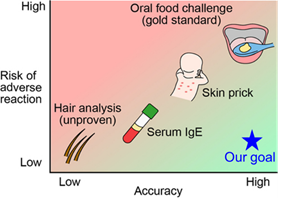Sindy K.Y. Tang, Ph.D.
Stanford University

From finger prick tests for blood glucose monitoring to industrial-scale drug screening in pharmaceutical companies, the ability to extract information from scarce volumes of samples quickly and cheaply is key to effective disease management and drug discovery. To this end, microfluidics offers major advantages over conventional liquid handling due to drastic reduction in reagent volume and the precise control of single cells, microtissues, and their microenvironments. The micro-nano-bio lab under the direction of Dr. Sindy Tang aims to develop innovative micro and nanoscale devices that harness mass transport phenomena to enable precise manipulation, measurement, and recapitulation of biological systems, in order to understand the "rules of life" and accelerate precision medicine and material design for a future with better health and environmental sustainability. Our approach involves building new tools to probe biological systems (from single cells to microtissues), and engineering smart materials, synthetic cells & tissues with properties that mimic some of the amazing properties biological systems have. A sample of research projects (note these may be out of date - feel free to reach out to find out our latest activities!):

How can we diagnose food allergy in a more accurate, safe, and rapid manner? Food allergy has reached epidemic proportions and has become a significant source of healthcare burden. Current diagnostic tests are either inaccurate or unsafe. In collaboration with experts in allergy in the Stanford School of Medicine and the Sean N. Parker Center for Allergy & Asthma Research, we are developing a food allergy test that is accurate, safe, rapid, and accessible. We focus on developing tools to better understand the function of basophils—the rarest white blood cell in circulation—and their role in food allergy. Our work is expected to allow for timely diagnosis of food allergy, and is expected to lower the number of adverse allergic reactions due to undiagnosed food allergy and the associated medical costs. In addition to food allergy diagnosis, our work will also enable better tracking of the efficacy of immunotherapy for food allergy.
Relevant papers:
Biomicrofluidics 2020, Lab on a Chip 2022, Allergy 2023,
Advanced NanoBiomed 2024, JACI 2024.
Funding: NIAID, NIBIB, DoD

How can a cell heal drastic wounds and remember what was lost? Wound repair and regeneration are essential biological processes for maintaining homeostasis and, ultimately, for survival. Despite the long history of study, with initial report dated back to 1700s by Abraham Trembley on hydra, our understanding of regeneration remains incomplete. We are interested in identifying rules governing extreme wound repair and regeneration. We are especially interested in the single-celled organism Stentor coeruleus, which can repair and regenerate from cell fragments smaller than 1/27 of the original cell size in 24 hours. Traditionally, regeneration has been studied with manual dissection. A key technological bottleneck lies in the lack of proper tools to perform physical dissection of organisms in a high throughput and precise manner, especially for organisms in the micro and mesoscale. To address this need, our first task is to develop better instrumentation to perform precision surgery in small organisms. We have developed a microfluidic "guillotine" for controlled wounding and surgery of single cells, organoids, and small organisms, to enable systematic study of the biophysics and molecular biology behind wound repair and regeneration. This project is in collaobration with Prof. Wallace Marshall at UCSF, and Prof. Moumita Das at RIT.
Relevant papers: Science 2017, PNAS 2017, BMC Biology 2021, Chem. Rev. 2022, SciRep 2024.
Also check out Sindy's recorded seminar here, and our working website for STEM outreach on Nature's Tiny Marvels!
Funding: NSF

Patient-derived tumor organoids (PDO), involving the ex vivo culture of fresh tumor fragments, have emerged as promising models for predicting patient drug response for personalized cancer therapy. In collaboration with Prof. Calvin Kuo, our project aims to develop a novel micro-dissection device to mechanically dissect fresh tumor specimens into live microtissues for PDOs. Our work is expected to reduce pre-analytical variations in PDO cultures, and increase the yield and quality of PDOs for downstream analyses, drug screens and biobanking. Upon validation, our work can lead to the standardization of the mechanical dissection process and micro-fragment size for PDOs, a critical step for broadening the clinical adoption of PDO technology for personalized cancer therapy.
Relevant papers: APL 2021.
Funding: NCI
The spatial organization of proteins within biological tissues plays a critical role in the normal functioning of the tissue and disease development. In collaboration with PNNL, our project aims to develop a high throughput and scalable technology for deep and unbiased spatial mapping of the proteome in tumor tissue slices. Our work is expected to accelerate mass spectrometry-based spatial proteomics, thereby advancing biomedical research and clinical diagnostics towards a better understanding of the role of tissue heterogeneity in pathophysiology, such as the role of the tumor microenvironment on cancer progression, for identifying novel biomarkers and therapeutic targets to facilitate the early detection, diagnosis, and intervention of diseases.
Funding: NCI
Can we better understand the rules of life by building a synthetic cell or tissue bottom up? Building synthetic cells is an exciting area of synthetic biology with opportunities to unravel basic design and organizational principles of cellular life. We are part of an NSF-funded team to build a synthetic neuron and neuronal network bottom up, by applying microfluidics, synthetic biology and other technologies. The goal is to reconstitue action potential and synapses in a minimum cell system. We are also exploring other synthetic cells and tissues that mimick biological functions, with potential applications in biohybrid systems for therapeutics and "living" materials.
Funding: NSF